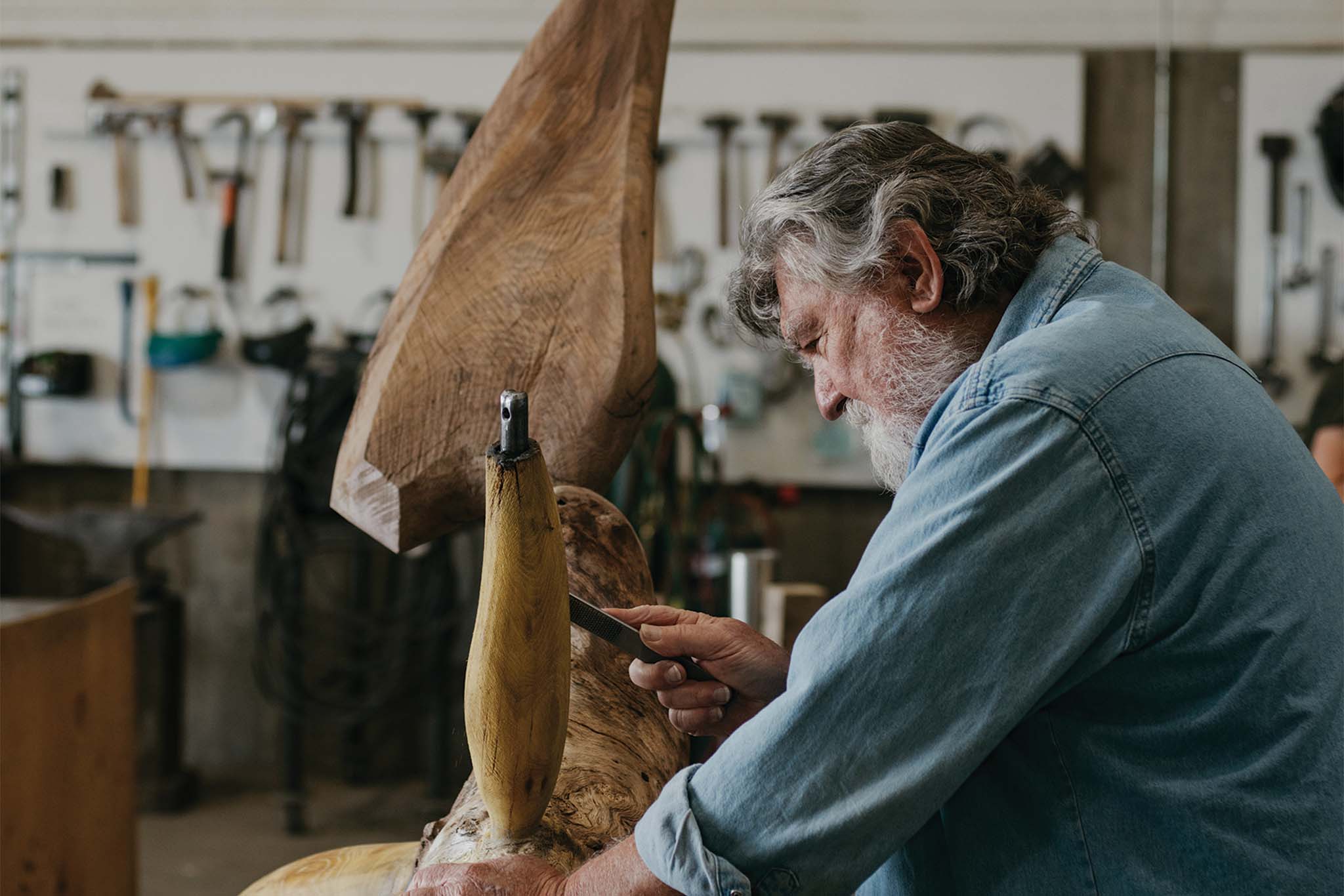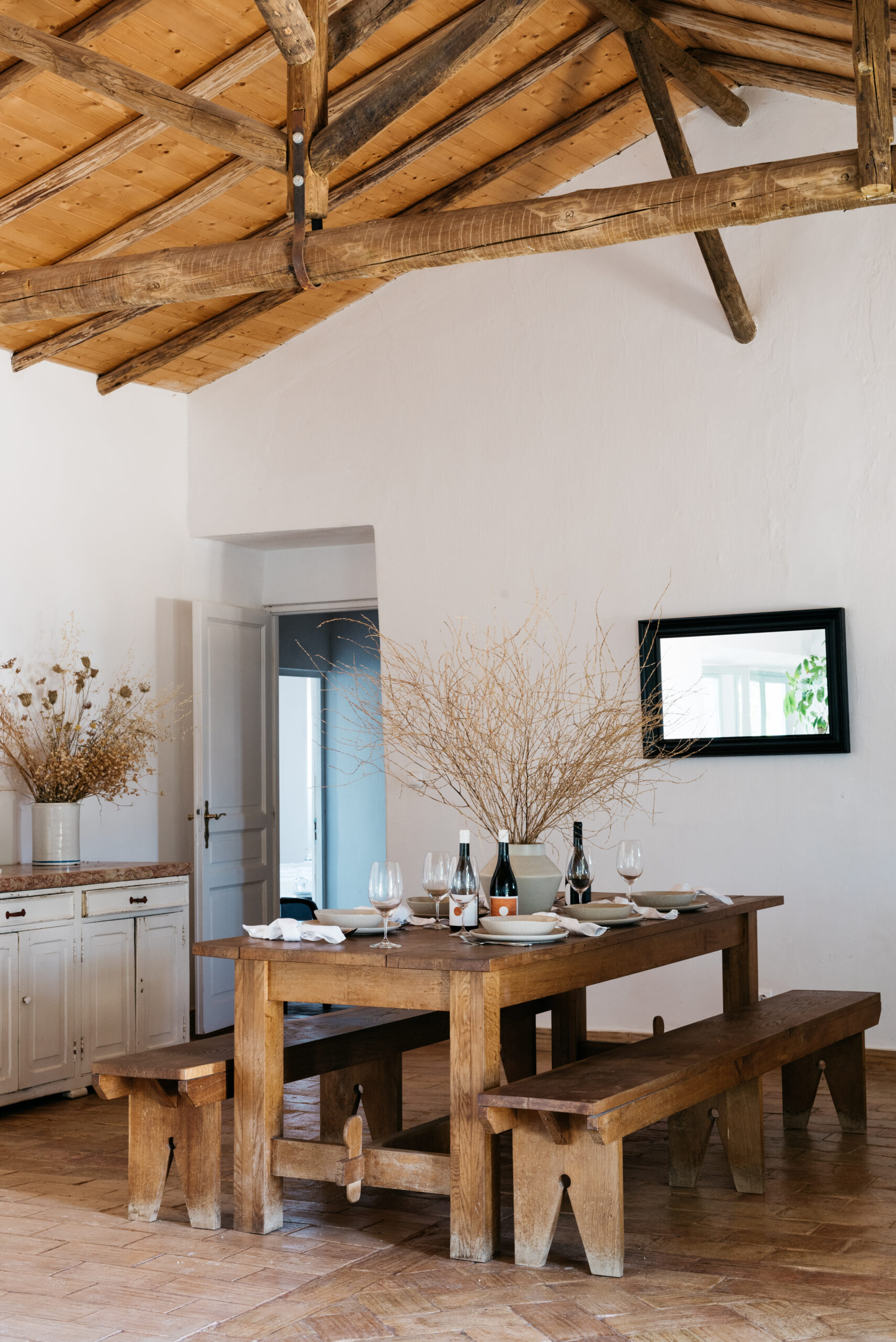Text by Paddy O’Connell
Images by Benjamin Rasmussen and Trevor Triano
James Surls doesn’t exactly fit the description of what you may think of when you picture an artist. No beret or round tortoise shell glasses. His look is more blue collar worker than nose-in-the-air sophisticate. That makes sense.
It’s early one morning on one of those cool days when summer and fall finally overlap, and I’m seated across the table from Surls—the beloved sculptor, poet, and visual artist based in Carbondale, Colorado. By “across the table,” I mean “on a Zoom call.” Surls is at his other home in Texas, a 185-acre ranch in the Splendora woods northeast of Houston. He is there clearing trees and manicuring a path through the forest for an art show he and his wife, artist Charmaine Locke, are planning. He is eager to talk to me about his connection to all landscapes and nature, and about his love for Colorado’s Roaring Fork Valley.
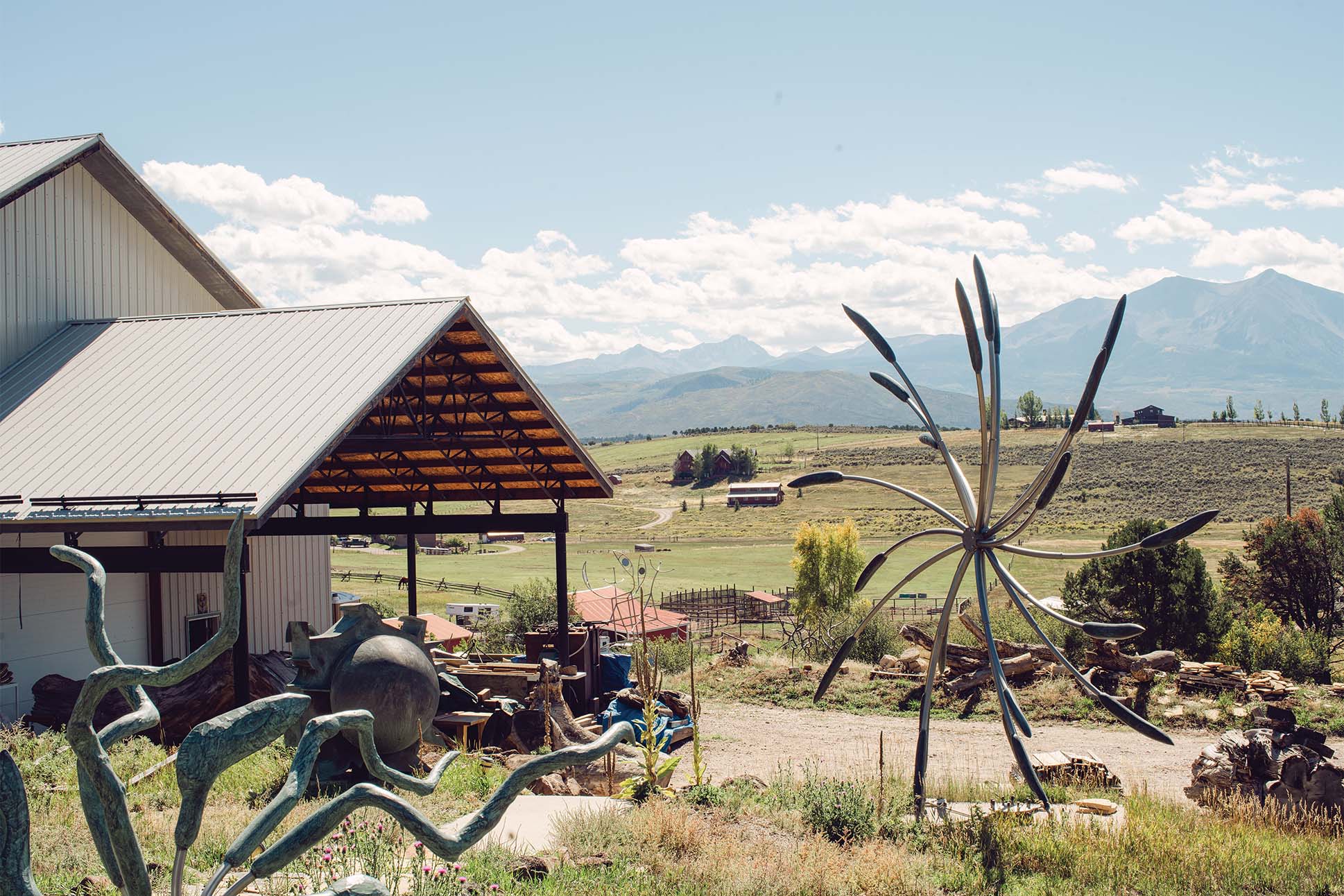
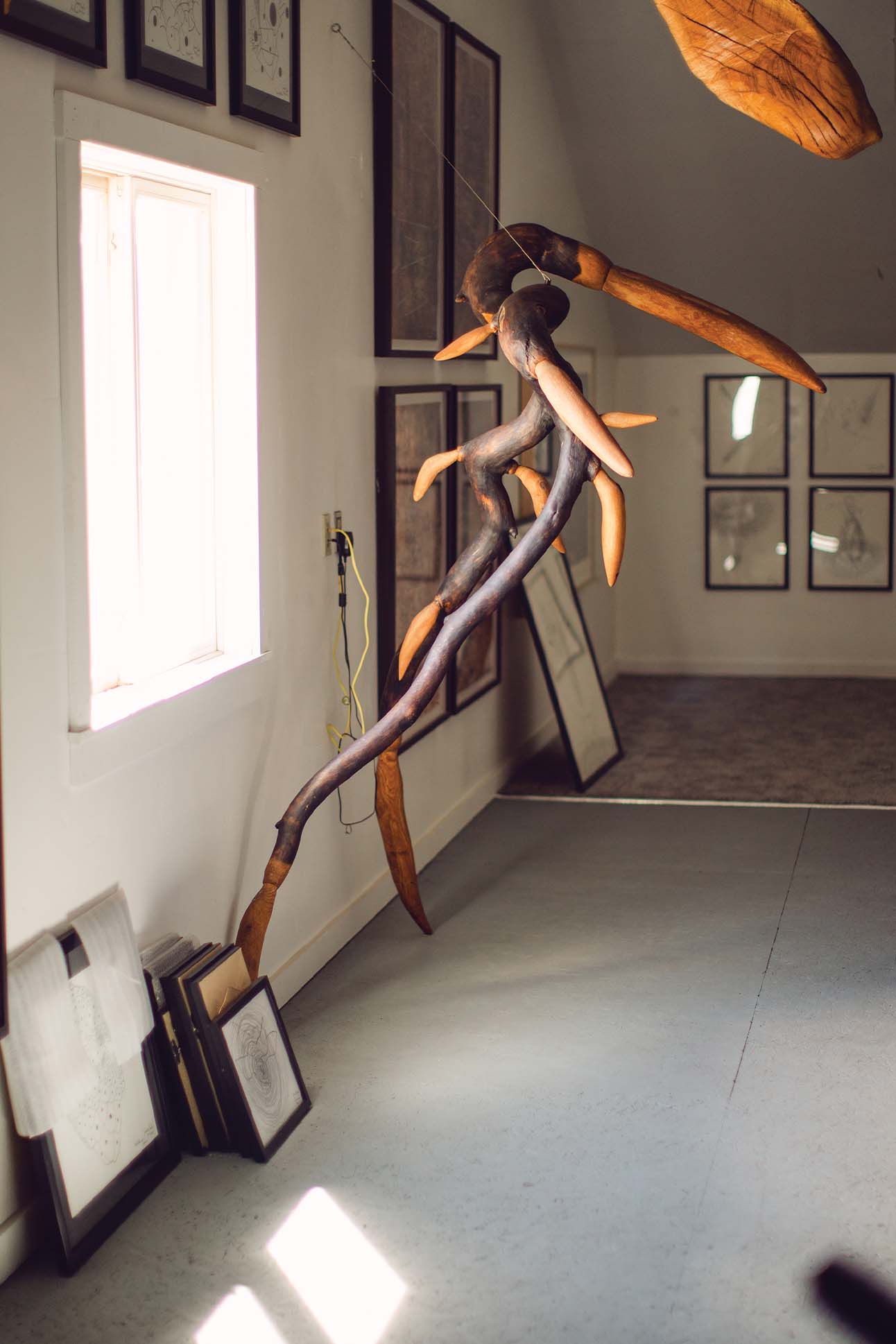
“The worst view out there is about a nine-nine,” he tells me with an endearing drawl that falls out of the side of his mouth like a body sinking into a comfy chair at the end of a long day outdoors. “There’s a few tens here and there and yonder, but my God, there’s not a bad view. If you don’t like living in the Roaring Fork Valley, it’s your fault.”
Surls has lived in the RFV since 1997, but has kept his Texas home, studio, and roots intact. With his white hair and beard and tender, childlike eyes that belie his 80 years, he has the rugged look of Ernest Hemingway but the smile and warmth of a mall Santa, and the way he speaks about his art is just as approachable. “It revolves around a sense of place,” he tells me. “I say you have to breathe deep the river, you have to breathe deep the mountain, you have to inhale the atmosphere and the sensibility of where you are.”
What Surls exhales is shocking and lovely. He has been described as a buckeye surrealist master. I get a firsthand, kick-you-in-the-gut experience with his work when his daughter Eva, Surls’ manager and personal assistant, gives me a tour of his Carbondale studio. Noting my visceral reaction to the spectacle inside, Eva responds, “Yeah, I know.”
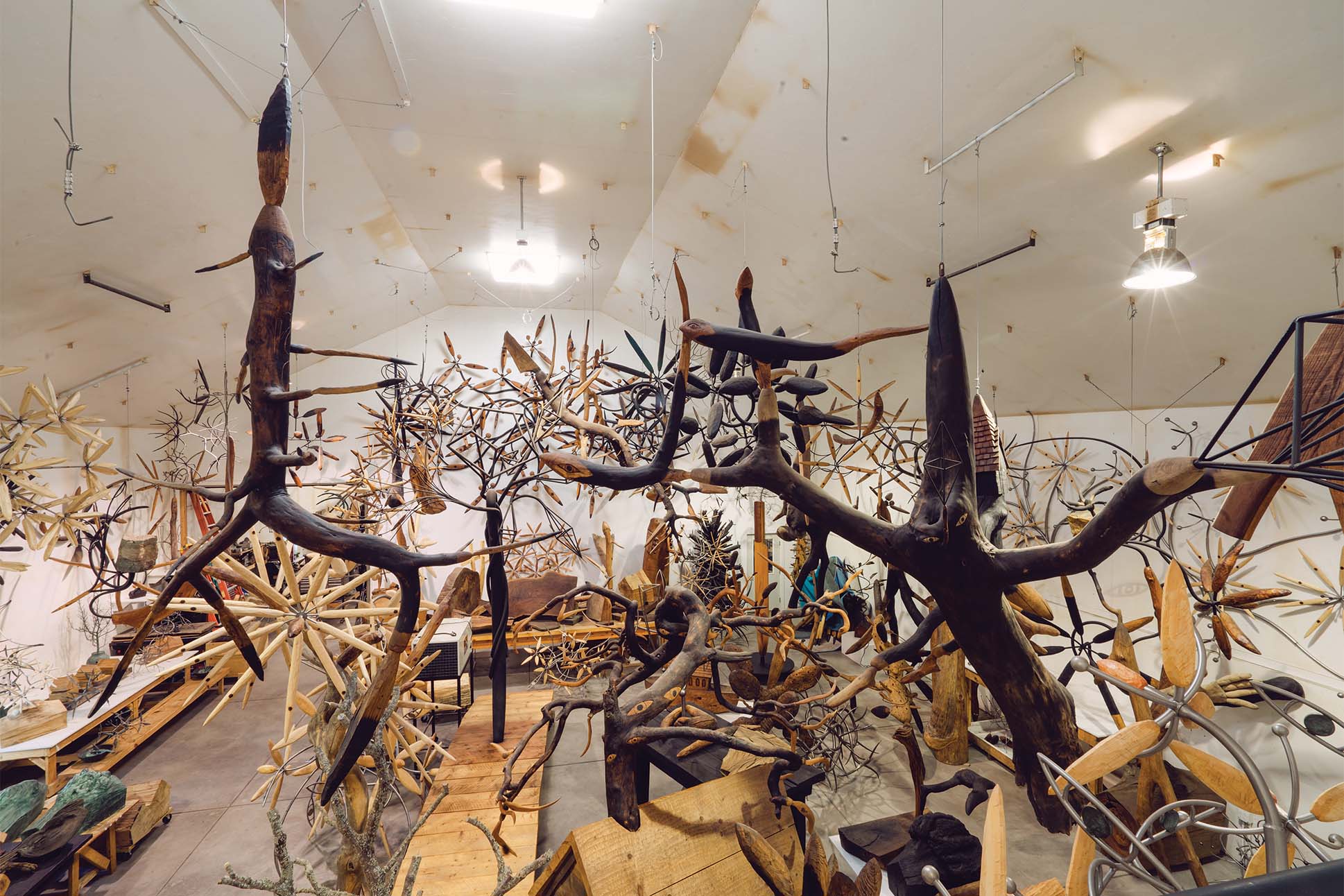
Surls’ latest piece looms before us. Enormous wooden flowers sprout from steel stems that Surls has affixed to a 125-year-old Northern California redwood burl the size of a Tuff Shed. Their petals vary in size, ranging from the length of an arm to nearly that of a helicopter rotor. I ask Eva about her father, but I’m distracted by the behemoth that towers 20-plus feet above us, dwarfing its surroundings. The studio itself is a sight to behold: Framed prints are on display beside chains, pneumatic lifts, and welding implements; sculptures hang from I-beams and fill the tabletops alongside hatchets and horse files. Yes, it is a studio, but it is a garage shop by any other name.
The combination of order and creative calamity inside the studio is Surls’ character personified. He keeps the same schedule and wears the same work boots, worn blue jeans, red suspenders, and Wrangler shirt every day, a product of the work ethic and sense of routine instilled in him as a boy, when he was tasked with rising before the sun to milk the cows at his childhood home in Texas. As I stand staring at the wood and steel wonders surrounding me in his shop, I recall what Surls told me about his creative process. “Just go to work, period,” he says. “I make art regardless of where I am. It doesn’t make any difference. I could be in a field out in Kansas and I still make art.”
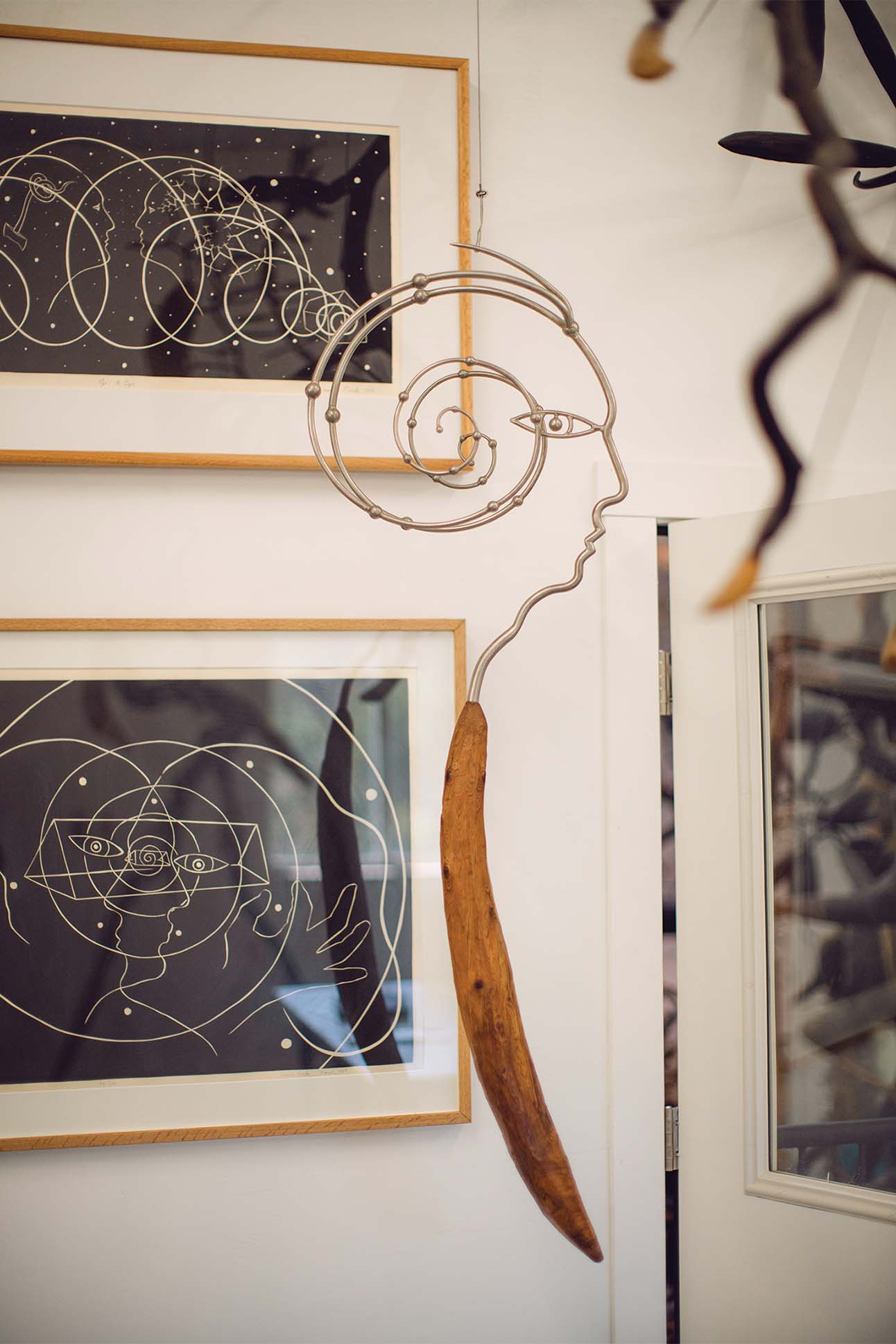

When I admit to Eva that her father’s blue-collar approach makes me like him and his artwork even more, she smiles like I am telling her something she has heard many times before. “People resonate with my dad and his work because he functions outside the norms of the art world,” Eva says. “He’s just a working guy. If you saw him down at the Co-Op in his pickup truck, you’d never think he is a world-class artist. You’d think he was a rancher or a plumber. But you come here, and you know why he’s shown at the Guggenheim and the MoMA.”
You can’t help but feel something when confronted with a James Surls piece. It is the same reaction you might have when encountering the jaw-dropping magnificence of the valley where he lives and works. Somehow, with his wood and his steel, his poetry and his hands, Surls captures this sublime landscape in his work.
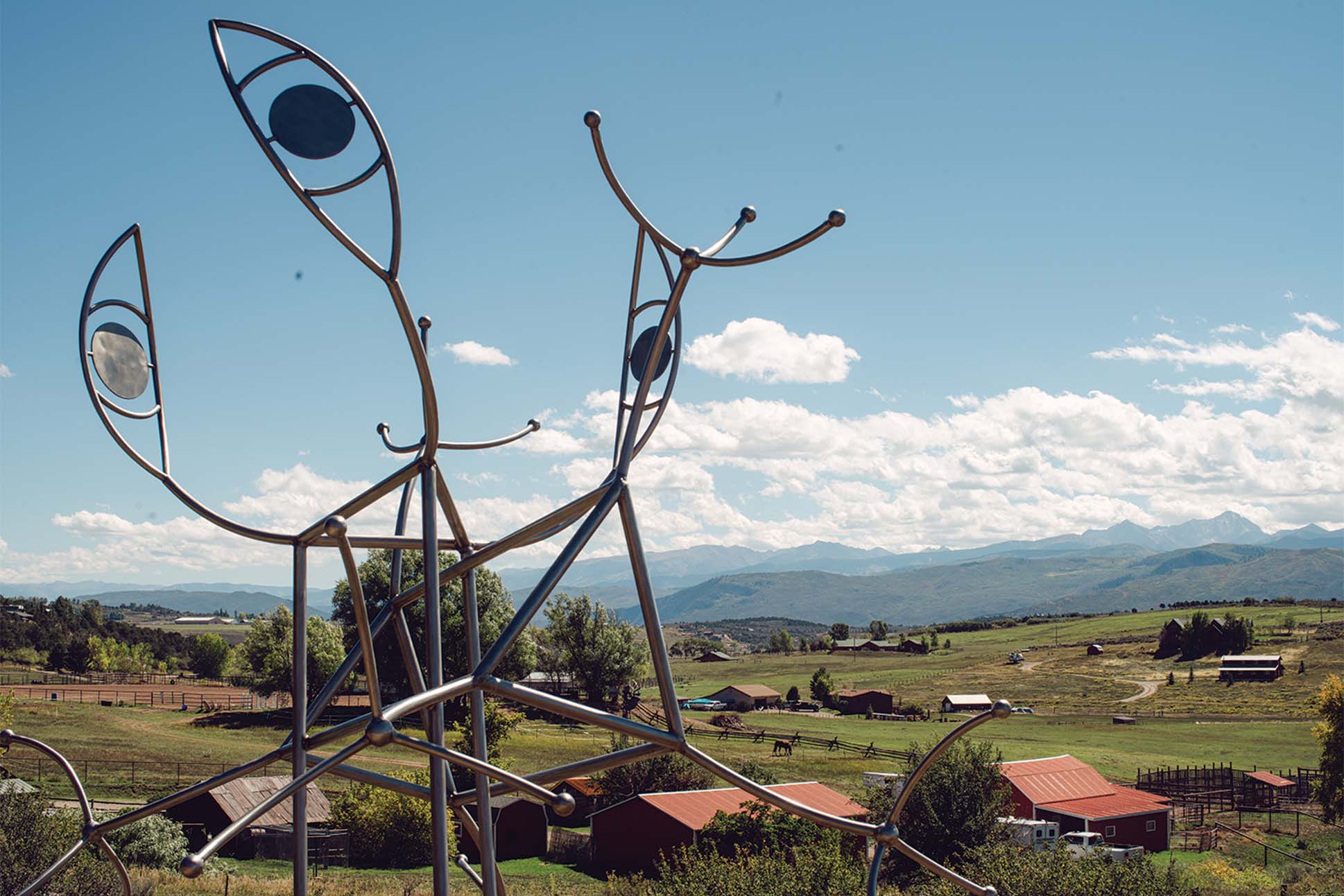
“From our kitchen window, we can see the top of Sopris,” Surls says. “We can see McClure Pass. We can see Chair Mountain, the tip of Mount Daly and Capitol Peak. I can look up the valley and see a thunderstorm coming from Aspen, or one coming through the Crystal Valley. If that doesn’t affect you, then you’re blind. You’re not breathing deep where you are. Well, I am totally there. I conjure from the trees, the rivers, the rocks. That is my muse. That’s my source.”

